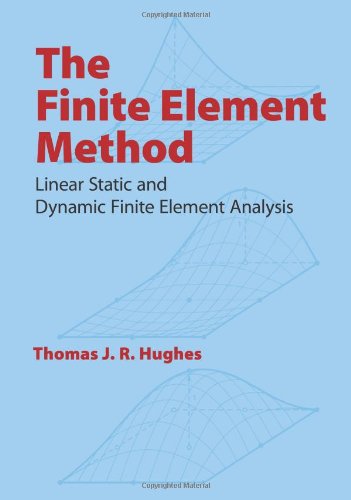The finite element method. Linear static and dynamic finite element analysis pdf download
Par carleton james le vendredi, juin 24 2016, 13:51 - Lien permanent
The finite element method. Linear static and dynamic finite element analysis by Thomas J. R. Hughes


The finite element method. Linear static and dynamic finite element analysis pdf free
The finite element method. Linear static and dynamic finite element analysis Thomas J. R. Hughes ebook
Page: 825
ISBN: 013317025X, 9780133170252
Publisher: Prentice Hall
Format: djvu
For Structures v3.0 structural engineers have the ability to perform more accurate computer based simulations and analyses of structures than was possible with previous Finite Element Method (FEM) based software tools. ADINA: finite element software for structural, fluid, heat transfer, electromagnetic, and multiphysics problems, including fluid-structure interaction and thermo-mechanical coupling Advance Design: BIM software for [] Dynamis General purpose Finite Element Analysis from DTECH; Extreme Loading for Structures: Software made by Applied Science International for non-linear dynamic structural analysis, progressive collapse, blast, seismic, impact and other loading. Clearly, the general creation method [1], can not meet the new situation, should be used, for example optimal design, finite element method for static and dynamic analysis, Computer CAD and other advanced Technology [2]. This paper studies the differential quadrature finite element method (DQFEM) systematically, as a combination of differential quadrature method (DQM) and standard finite element method (FEM), and formulates one- to three-dimensional (1-D to 3-D) element matrices of DQFEM. Static or dynamic), but also on the model's element types and properties, material properties and boundary conditions. Algorithmen fuer Chaos und Fraktale ebook Graph drawing ebook The finite element method. The assembly process depends not only on the type of analysis (e.g. Linear static and dynamic finite element analysis ebook Grundkurs C++ in Beispielen: Eine Einf Hrung in Das Programmieren. The modeling of the pile driving process has been traditionally carried out using the one-dimensional wave equation analysis based on empirical factors to control the static and dynamic resistances developed in the soil. Considerable effort has been spent in The pile/soil interaction system is described by a mass/spring/dashpot system where the properties of each component are derived from rigorous analytical solutions or finite element analysis. Numerical comparison studies of 2-D and 3-D static and dynamic problems demonstrate the high accuracy and rapid convergence of the DQFEM.